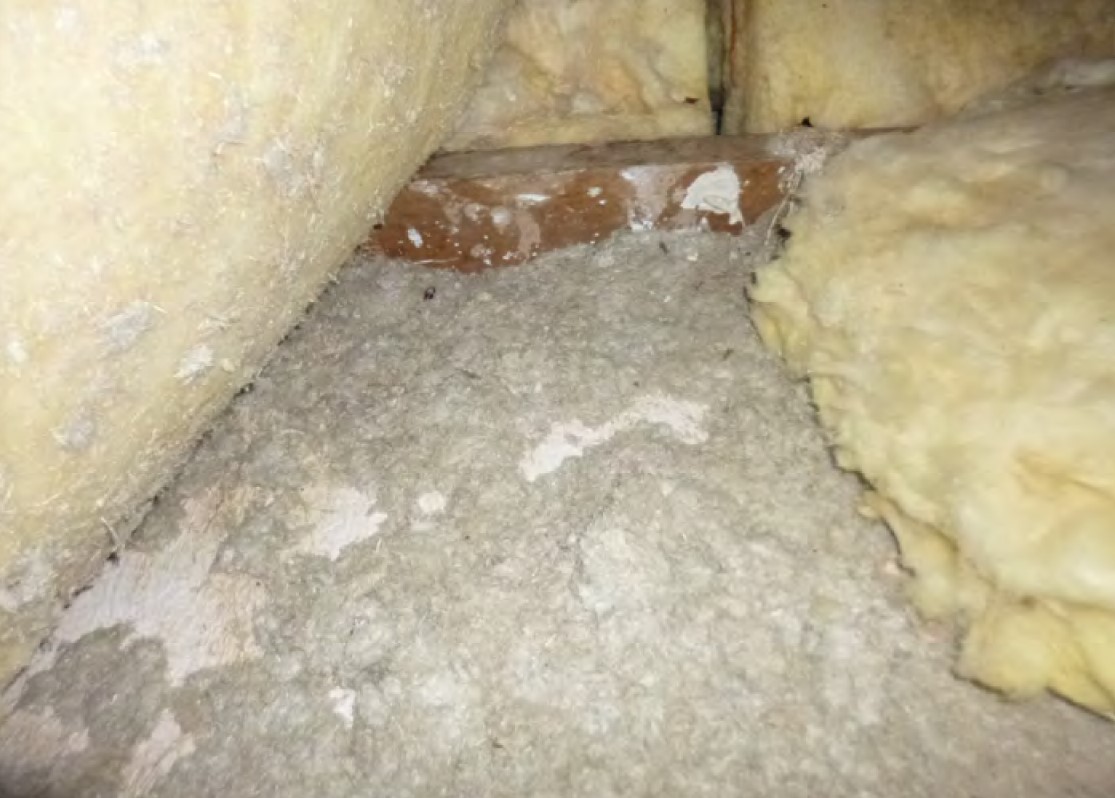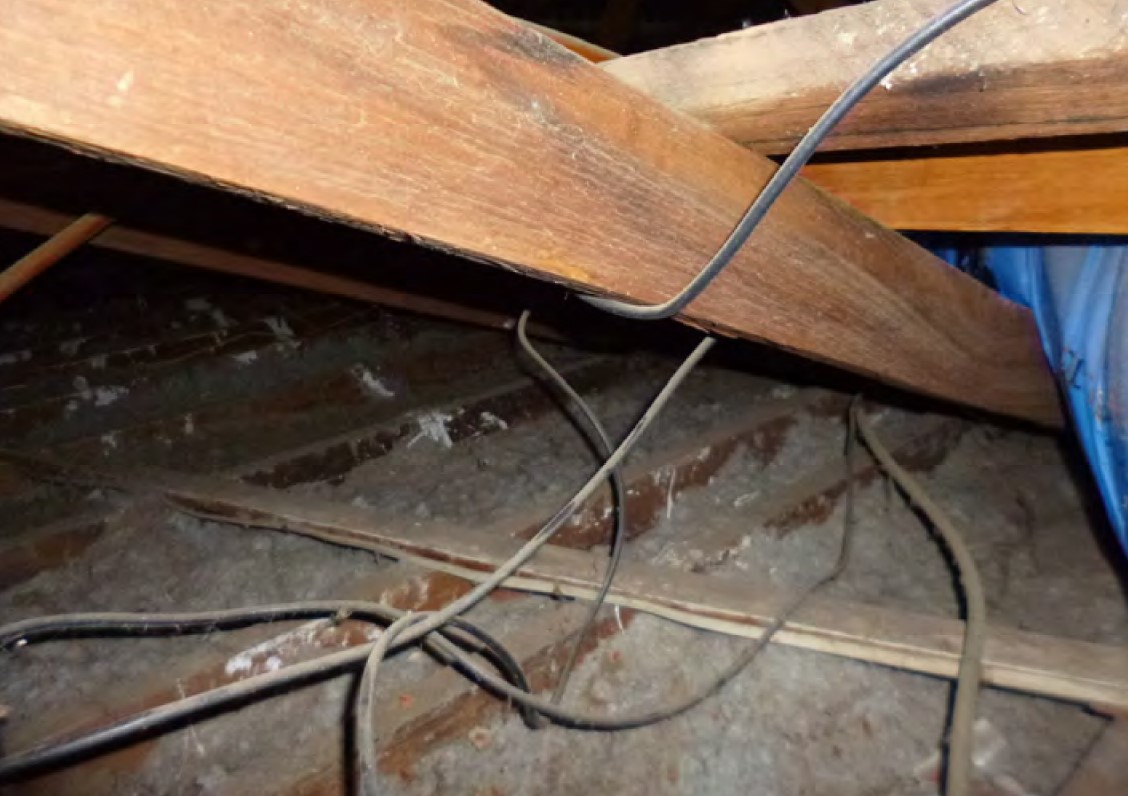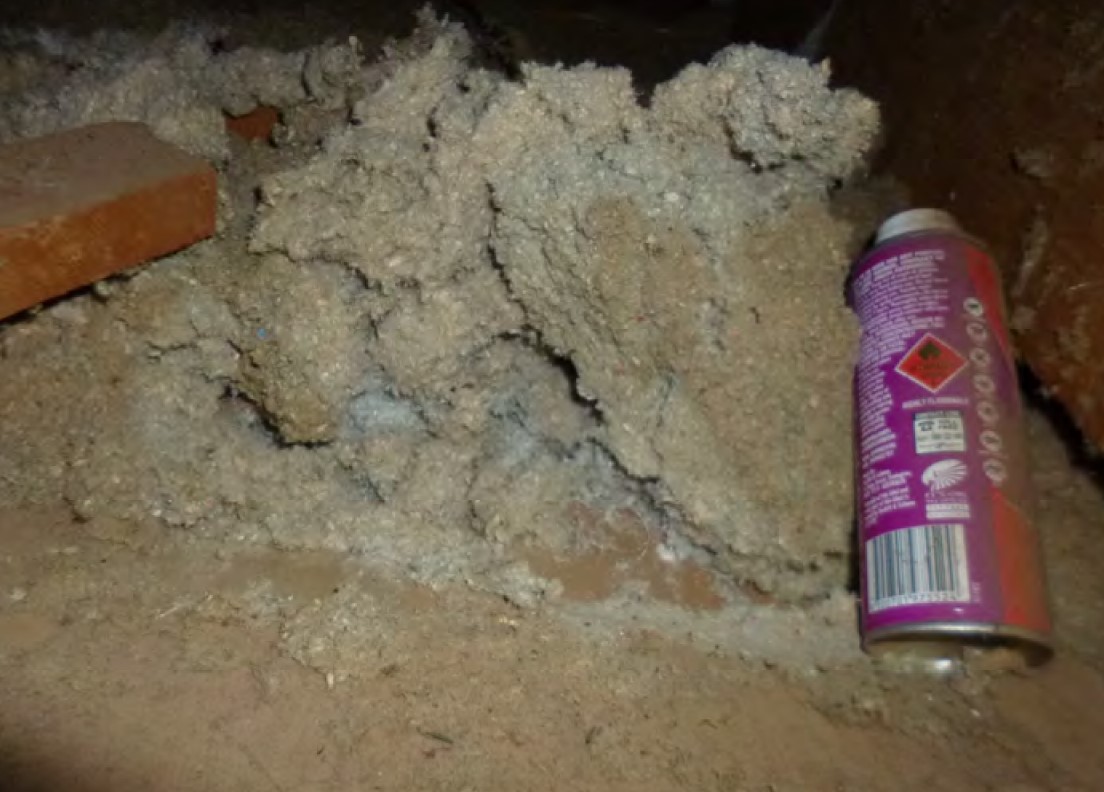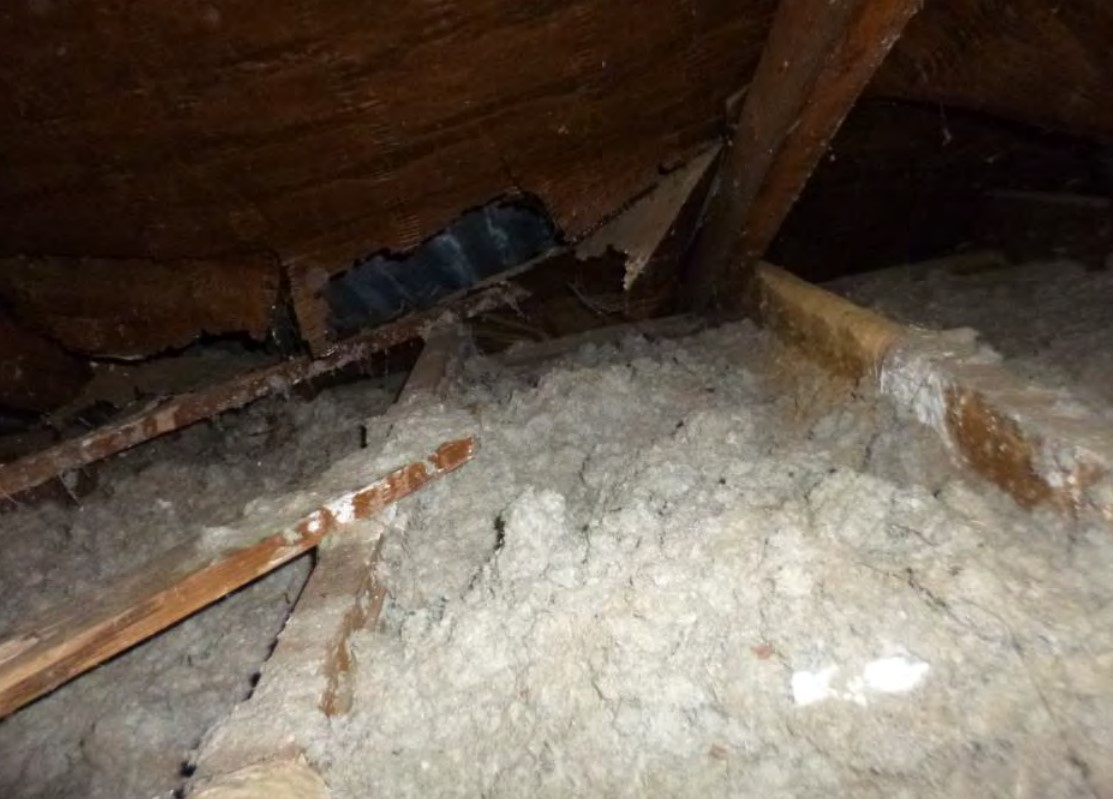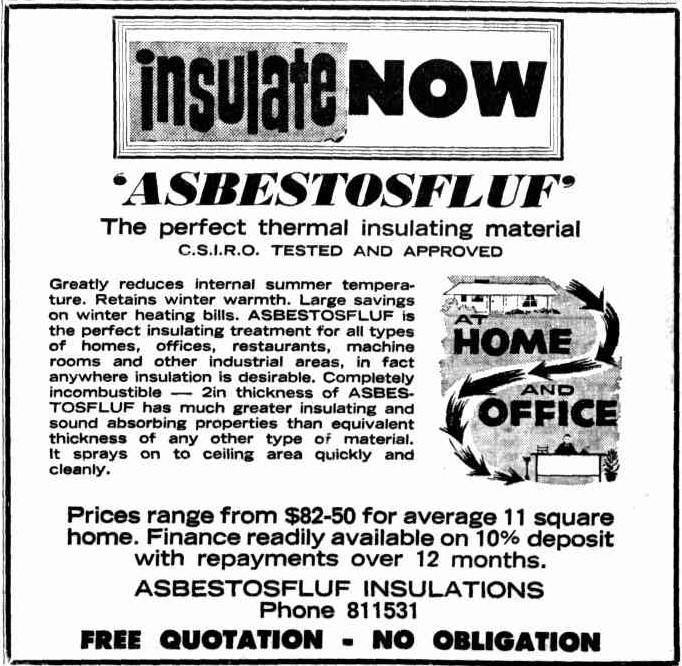Home / Insulation / Loose-fill asbestos insulation
Loose-fill asbestos insulation
Description
Classified as friable in every Australian state and territory.
Loose asbestos fibres (usually South African sourced amosite asbestos) pumped from a truck-based hopper via a hose into the ceiling space of the structure. Depth of insulation was around 5-6.5cm (2-2.5”) when complete.
May be in-situ as the sole insulation or covered with non-ACM material such as batts.
Asbestosfluf (commonly known under the name Mr Fluffy) was a material installed in residential structures between 1968 and the early 1980s.
Brands/products
Asbestosfluf
Bowsers Asphalt (NSW)
Years of production/use
Mid 1950s to early 1980s
Residential uses
Ceiling space
Industrial uses
- Commercial ceiling space above structures that required consistent temperature control such as cool rooms, freezers, food storage, laboratories etc.
Be aware
Spacings, cracks or perimeter spaces that provide air ingress from ceiling space may provide avenue for respirable asbestos fibres into other areas. Examples: manholes, recessed light fittings and holes over other light fittings, exhaust fans, ventilators (ceiling and wall) as well as damaged or loose cornices, ceiling and wall sheeting.
Loose roof tiles or damaged roofing with no sarking may provide leakage to exterior areas. Roof gutters may hold dust/residue in this regard.
Tween wall vertical cavities accessible from ceiling space may have been intentionally filled, or will contain dust/residue from loose fill material. Sub-floor areas open to those cavities may also be contaminated.
A previous remediation process whereby the material was pumped out is unlikely to have removed 100% of the material. Dust/residue may remain, particularly below non-ACM insulation that may have been installed later.

